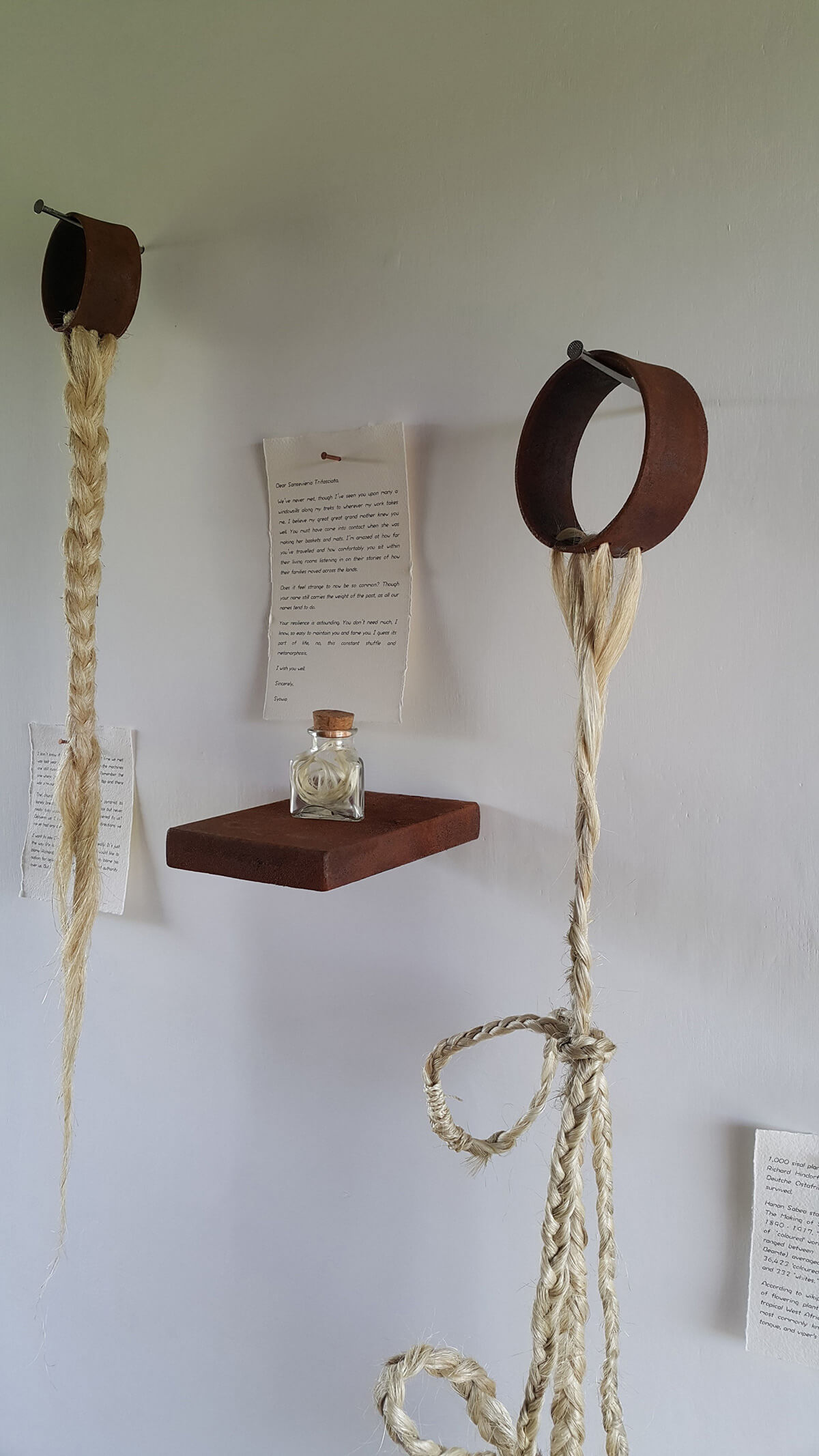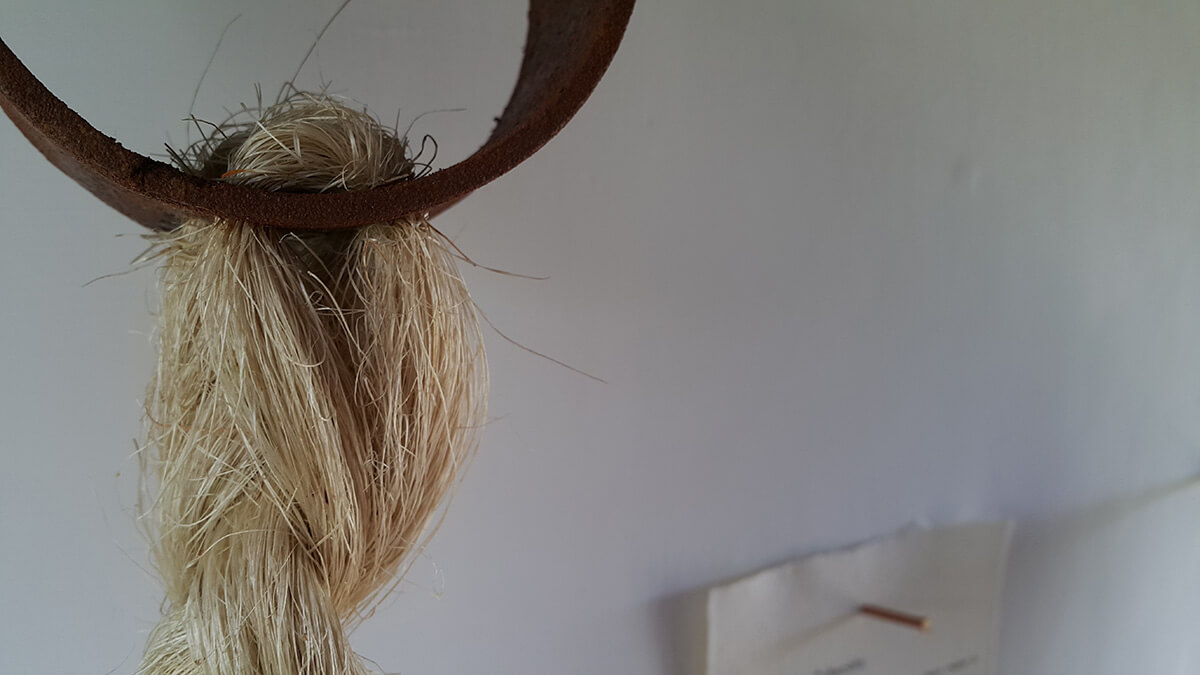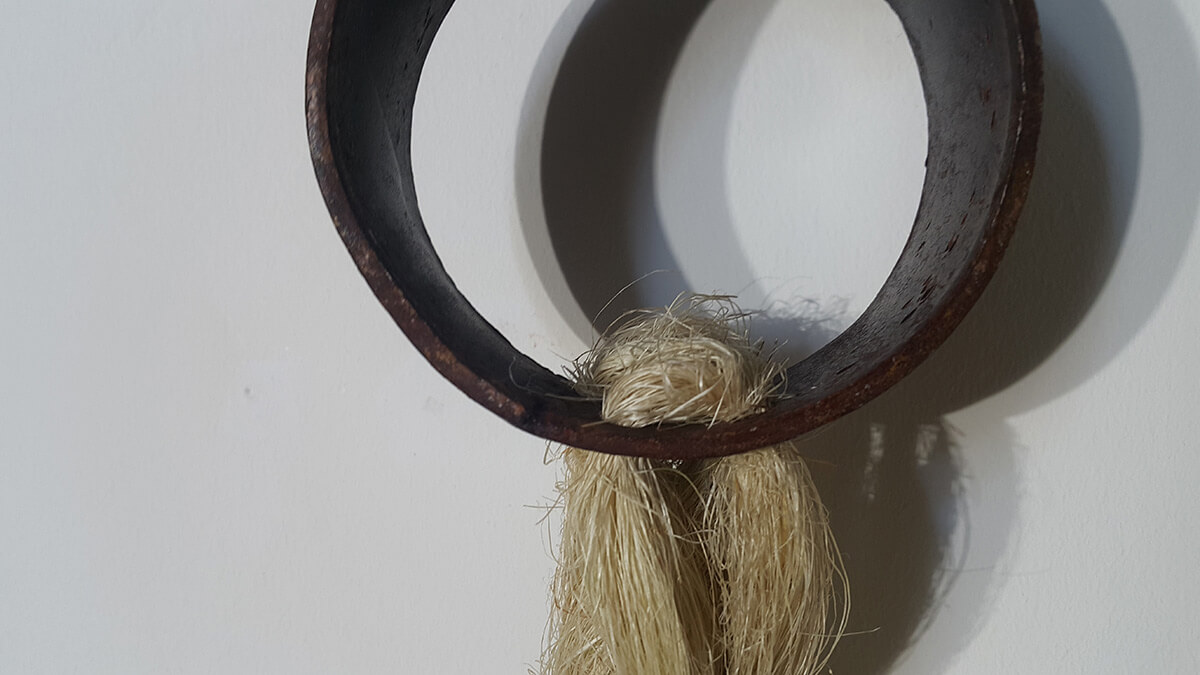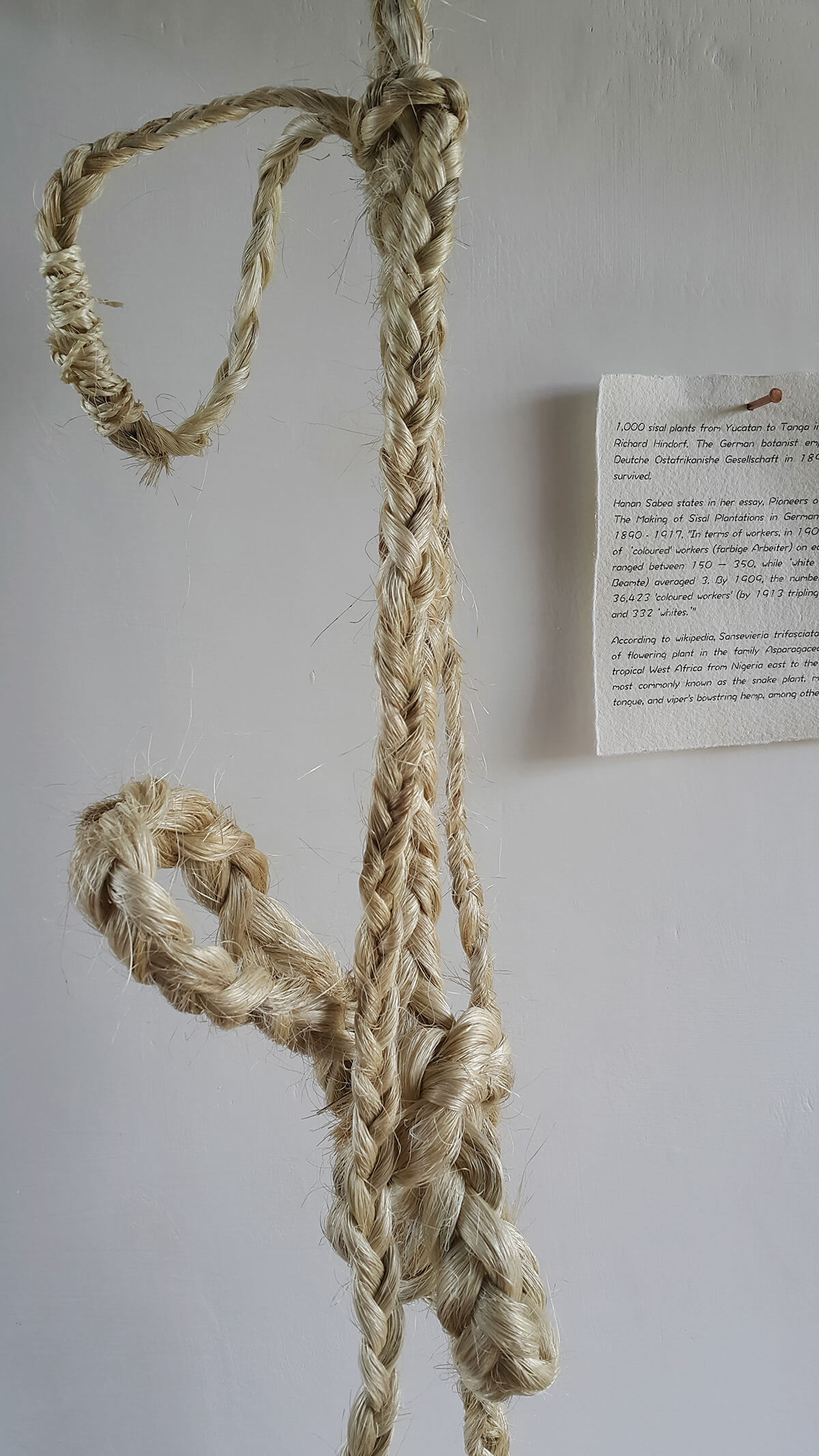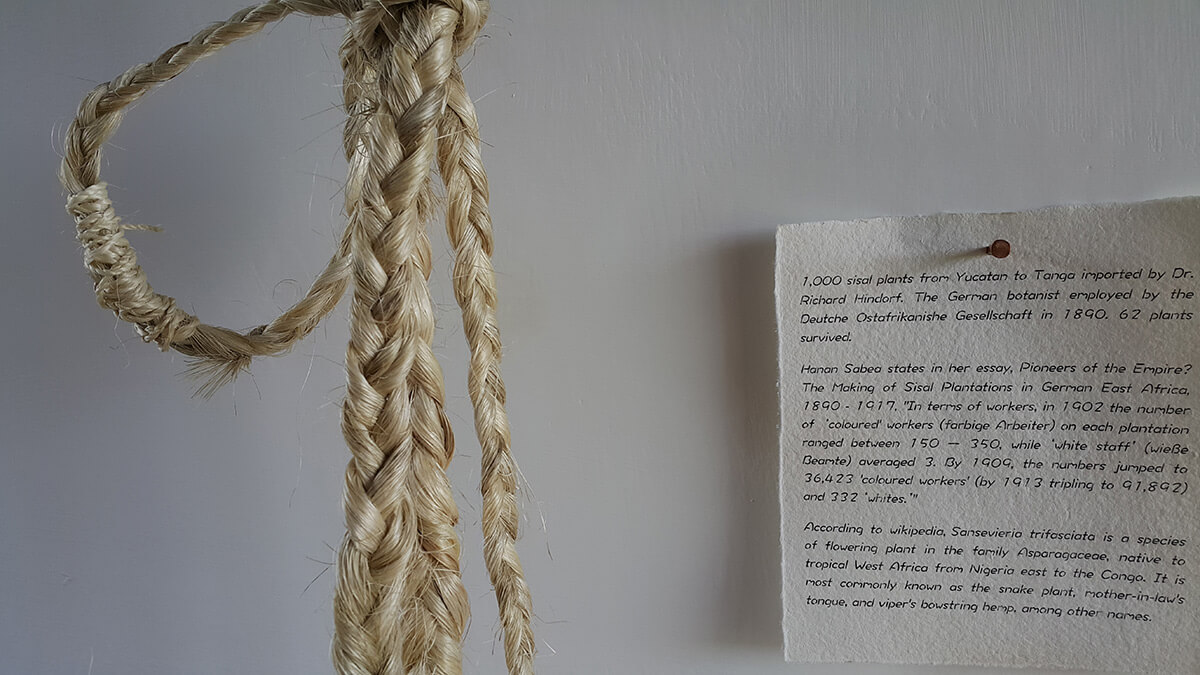Concept:
The installation features a fragmented narration highlighting the role of the plant and material sisal, and the initial plantations introduced by the Germans to East Africa from the Yucatan area of Mexico in the early 1900s. Hanan Sabea states in her essay Pioneers of Empire? The Making of Sisal Plantations in German East Africa, 1890 – 1917, “since its inception, sisal was […] synonymous with power, capital, and progress, all ideals of the colonial project that was seeking not only economic profit but also visible signs of dominating presence.” By braiding the sisal I am relating to the person-hood of the labored black body used to build Europe’s economy. The absence of this body echoes the violence of the eradication of black person-hood in the colonial project. The sisal in a glass container in The Green Gold is fiber from the Sansevieria Trifasciata (Mother in Laws Tongue) plant, which is indigenous to Africa and antecedent sisal from colonial times. Sansevieria Trifasciata has now become a common houseplant around the world. The short braided sisal in The Green Gold is from Yucatán, Mexico. The same variety of sisal that Dr. Richard Hindorf, a German botanist employed by the Deutsche Ostafrikanishe Gesellschaft, brought to Tanga, Tanzania in 1890. The longer sisal is from East Africa, which is the remnant of this original variety of sisal.
